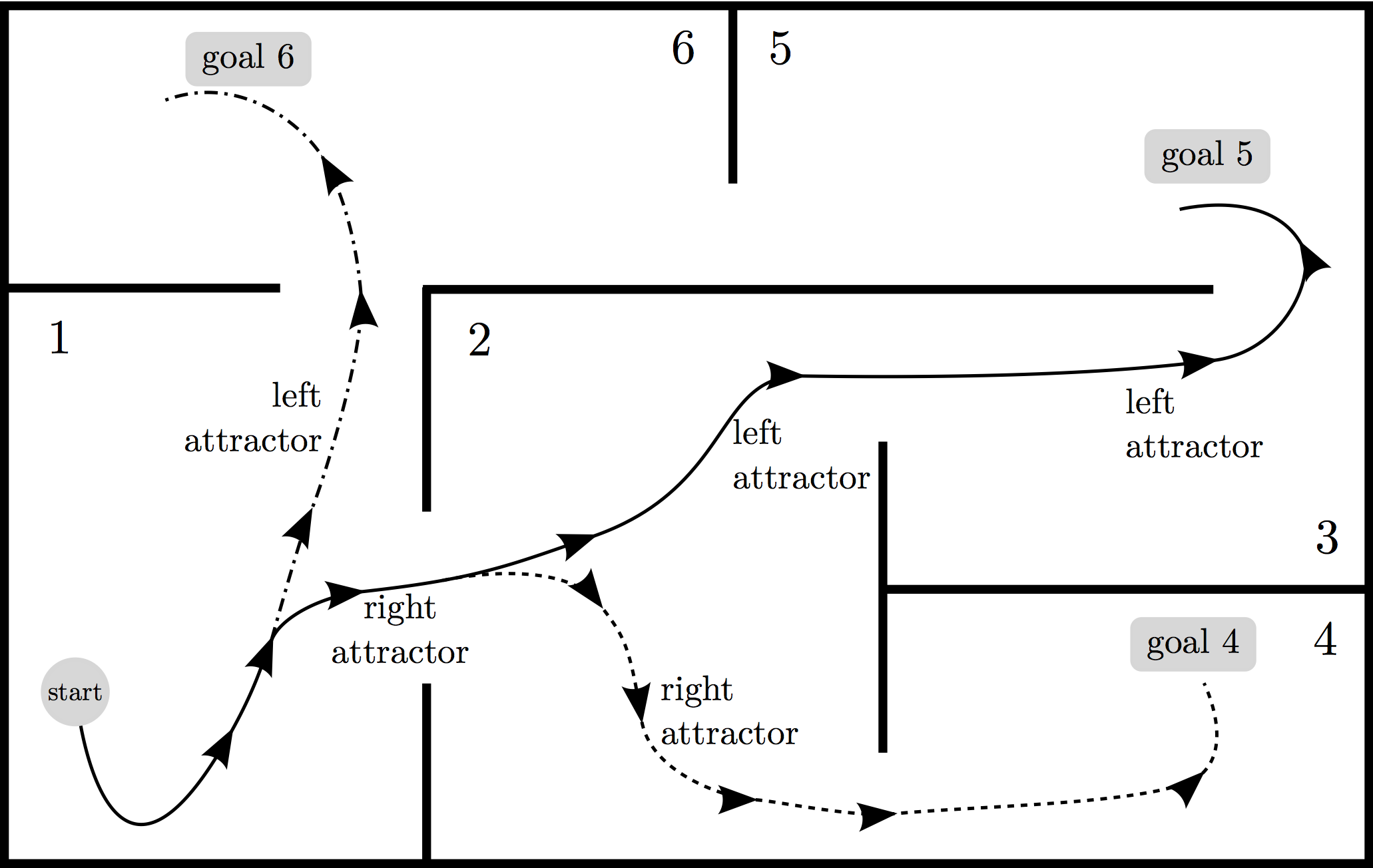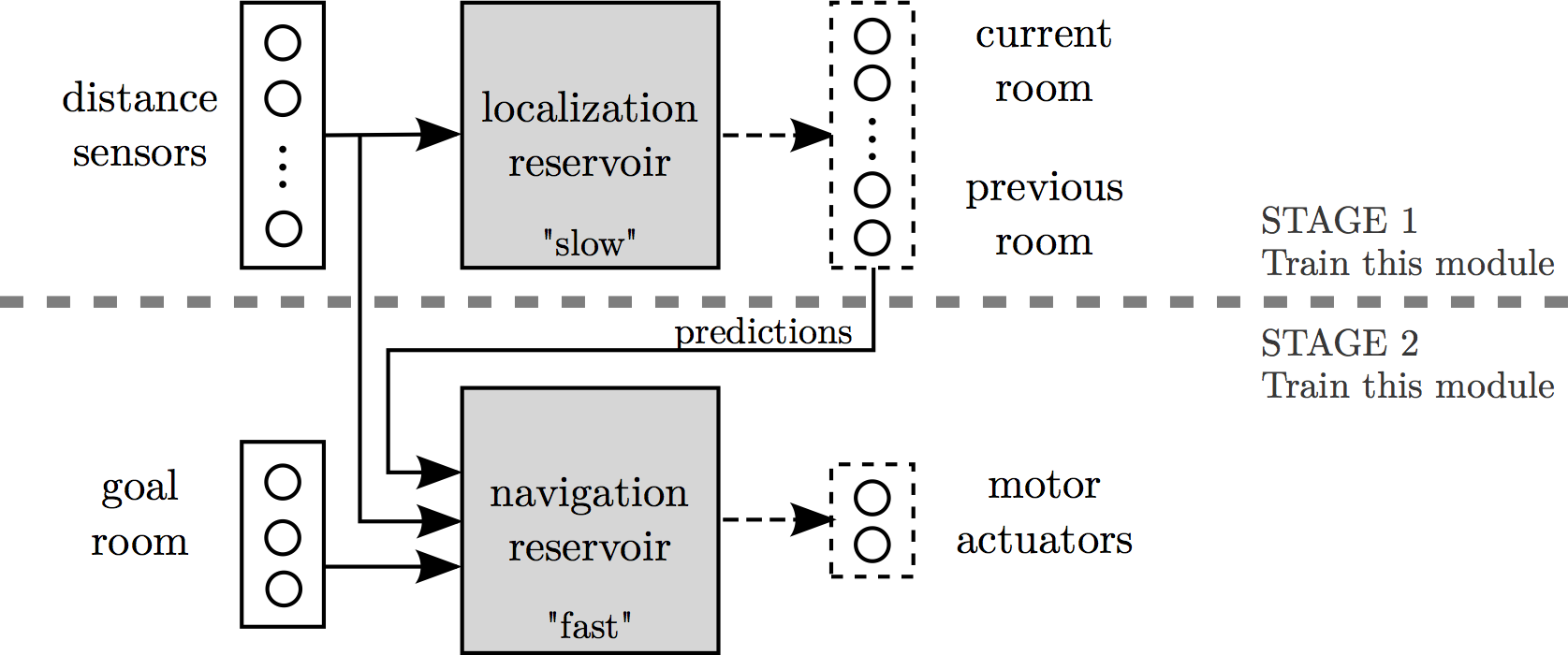In this work we propose a hierarchical architecture which constructs internal models of a robot environment for goal-oriented navigation by an imitation learning process. The proposed architecture is based on the Reservoir Computing paradigm for training Recurrent Neural Networks (RNN). It is composed of two randomly generated RNNs (called reservoirs), one for modeling the localization capability and one for learning the navigation skill. The localization module is trained to detect the current and previously visited robot rooms based only on 8 noisy infra-red distance sensors. These predictions together with distance sensors and the desired goal location are used by the navigation network to actually steer the robot through the environment in a goal-oriented manner. The training of this architecture is performed in a supervised way (with examples of trajectories created by a supervisor) using linear regression on the reservoir states. So, the reservoir acts as a temporal kernel projecting the inputs to a rich feature space, whose states are linearly combined to generate the desired outputs. Experimental results on a simulated robot show that the trained system can localize itself within both simple and large unknown environments and navigate successfully to desired goals.



- Eric Antonelo and Benjamin Schrauwen On Learning Navigation Behaviors for Small Mobile Robots with Reservoir Computing Architectures IEEE Transactions on Neural Networks and Learning Systems, Vol. 26 pp. 763-780 (2014). DOI: 10.1109/TNNLS.2014.2323247.

- Eric Antonelo and Benjamin Schrauwen Supervised learning of internal models for autonomous goal-oriented robot navigation using Reservoir Computing IEEE International conference on Robotics and Automation, Proceedings, pp. 6 (2010)









